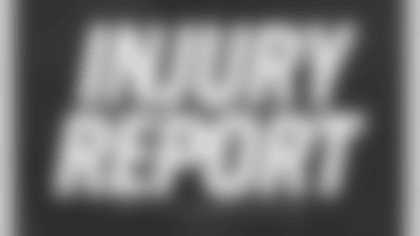The Commanders are venturing into a new frontier in Week 11 as one of two teams part of the first-ever NFL game in Madrid, Spain. With its background, gravitas and architecture, the venue where the matchup will take place is fit for the historic occasion. Here are 10 things to know about the Santiago Bernabéu Stadium.
1. The home of Real Madrid
While tens of thousands will descend on the stadium to watch American football on Nov. 16, gamedays typically at the venue revolve around fútbol. El Bernabéu is the home of Real Madrid, one of the world's most popular and decorated soccer clubs. Founded in 1902, the team has won over 100 trophies, including 71 domestic titles and a record 35 international trophies, making it the most successful club in Europe. Fans of the team are called Madridistas, and a couple of its biggest rivals are Atlético Madrid (the two are under ten miles away from each other) and FC Barcelona.
2. Located in the Chamartín district
The Bernabéu is a central focus of the Chamartín district, an area north of the Madrid's city center, which blends a metropolitan flare with residential vibes. You'll find everything from skyscrapers and upscale shops to small plazas with cafes and family-friendly parks in the district. Chamartín station is a bustling hub with high-speed trains and airport links.
3. Venue completed in 1947
Calls for a new Real Madrid stadium escalated in the early 1940s as the population of Madrid outgrew the old Campo de Chamartín and an interest in soccer increased. After plenty of negotiations, red tape and a design competition to find the right architect, ground was broken on the new stadium in 1944. It was completed three years later and was officially called Estadio Real Madrid Club de Fútbol (although fans just called it "New Chamartín Stadium" in Spanish). The first game held at the new stadium was a matchup between Real Madrid and Portuguese side Os Belenenses, which Los Blancos won, 5-1.
4. Who was Santiago Bernabéu?
The Nuevo Chamartín name lasted less than a decade. In 1955, Real Madrid's stadium was renamed the Santiago Bernabéu after longtime president and former player Santiago Bernabéu de Yeste. Widely regarded as one of the most important figures in Real Madrid history, Bernabéu helped the club become a juggernaut on both a national and international scale and leveled up its influence as a force beyond the pitch.
5. Europe's third-largest stadium
Currently, the Bernabéu has a capacity of 83,186, making it Europe's third-largest stadium behind the Camp Nou in Barcelona and Wembley Stadium in London. Before the stadium's various renovations and capacity changes, the Bernabéu once featured a gameday attendance of staggering proportions. On April 19, 1956, 129,690 fans poured into the arena to watch a European Cup match between A.C. Milan and Real Madrid!
6. First American football game took place in 1958
Yes, this Week 11 game is the first official NFL game to take place in the Spanish capital. However, it's not the first American football game to be played at the Bernabéu. On November 16, 1958, (67 years to the day from when this NFL game will kick off), football teams representing two US Air Force bases in Europe played a game at the stadium. The Tigers from Toul, France faced off against the Tacooners from Giebelstadt, Germany after a La Liga match between Real Madrid and Valencia.
7. A push to be elite
Along with Real Madrid's pursuit of excellence as a soccer club has come efforts to put its stadium among the crème de la crème. The Bernabéu was renovated in 1982, 2001 and 2019. In 2007, UEFA, European soccer's governing body, bestowed the stadium with "Elite" status – its highest ranking. The most recent renovations that began in 2019 just finished up at the end of 2023 and cost an estimated 1.170 billion euros (approximately 1.343 billion dollars).
8. Pope John Paul II once visited
Like many soccer stadiums of a similar size around the world, the Bernabéu has hosted several large-scale non-sporting events, including concerts from global stars like Taylor Swift, Bruce Springsteen, U2 and more. However, not every soccer arena gets to welcome a Pope! In 1982, Pope John Paul II addressed somewhere around 160,000 people at the stadium.
9. Host of a World Cup Final
Also in 1982, Spain hosted its first and still only FIFA World Cup tournament, and the Bernabéu was selected as the site for the final game. The month of soccer featured legends of the game such as Diego Maradona (Argentina), Michel Platini (France) and Zico (Brazil), as well as the tournament's first ever penalty shootout. In front of a crowd of 90,000 at the Bernabéu, Italy defeated West Germany, 3-1, to secure its third World Cup title.
10. A greenhouse…below the stadium?!
As part of the last renovation wave a few years ago, Real Madrid implemented revolutionary technology to ensure its playing surface stays in pristine condition. The Bernabéu has a greenhouse located four stories underground which stores the natural grass pitch, complete with UV growth lights, humidity and temperature control and remote sensors to track grass health. If a concert or other event is coming to town, the retractable trays built into the underground system allow the turf to be flipped in and out in around six hours.














